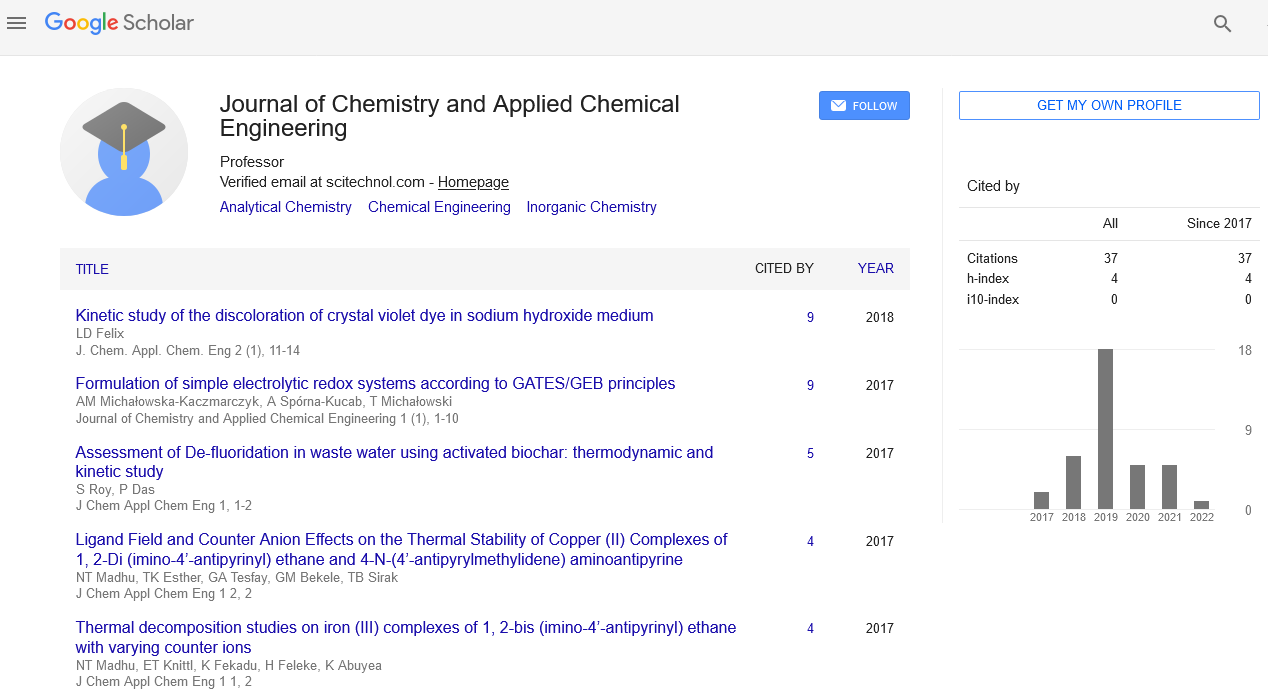Cytoplasmic calcium ion stabilization through pairing with rhythmic TCA cycle intermediate concentration gradients
Callen Moon and Robert Buckingham*
Northwestern University, United States
: J Chem Appl Chem Eng
Abstract
Upon detection of the cytokine facilitated all clear signal, calcium is released from the outer membrane of the capillary cell. Calcium, paired with ATP and/or malate, migrate to the mitochondrial inter membrane space where they facilitate the feedback loop activation of mitochondrial Nitric Oxide (NO) synthase. NO production shunts the TCA cycle at isocitrate dehydrogenase, succinate dehydrogenase and establishes concentration gradients involving citrate, malate and succinate. We postulate that inter membrane calcium facilitates the antiport of malate into the mitochondria in exchange for succinate as each dicarboxylate moves down its respective concentration gradient. Cytoplasmic succinate is subsequently stabilized by inter membrane magnesium as magnesium leaves the matrix due to diminished demand for nascent ATP stabilization. Stabilized by magnesium, succinate migrates down its concentration gradient into the cytoplasm where it facilitates augmentation of glycolysis and lipogenesis. Simultaneously, decreasing cytoplasmic malate concentrations inhibit gluconeogenesis. In contrast, when the capillary cell receives a cytokine excitatory “all hands on deck” signal from interstitial space helper cells (i.e astrocytes, stellate cells, Kupffer cells, etc.) immediate and abundant demand for ATP is required to facilitate active transport and increase capillary cell continuous outer-membrane permeability for immune funneling. Subsequently, magnesium flows down its concentration gradient into the mitochondria in exchange for calcium to stabilize nascent ATP. This feedback-loop activates ATP synthase and deactivates NO synthase resulting in a reversal of TCA cycle intermediate concentration gradients. Thus, malate flows back into the cytoplasm where it is stabilized by calcium and facilitates increased gluconeogenic flux. Malate’s counterpart, succinate, flows into the mitochondrial matrix for use in a complete TCA cycle. Decreased cytoplasmic succinate levels result in increased lipolysis, for beta-oxidation and decreased glycolytic flux. Thus, a rhythmic cellular cycle is established based on TCA cycle dicarboxylates, calcium and magnesium concentration gradients that facilitate cellular purpose and function.
Biography
Robert Buckingham, MD, FACP, received his MD from University of Illinois, Chicago and residency at Northwestern University and has been a practicing internist for 43 years. In addition to internal medicine, he subspecializes in cardiometabolics. He also holds several medical director positions and has published five books regarding chronic inflammation and metabolism.
 Spanish
Spanish  Chinese
Chinese  Russian
Russian  German
German  French
French  Japanese
Japanese  Portuguese
Portuguese  Hindi
Hindi 